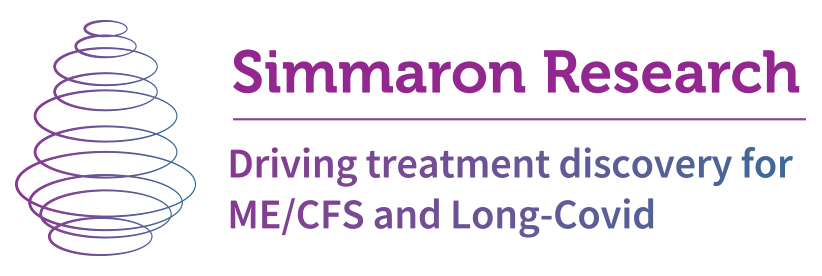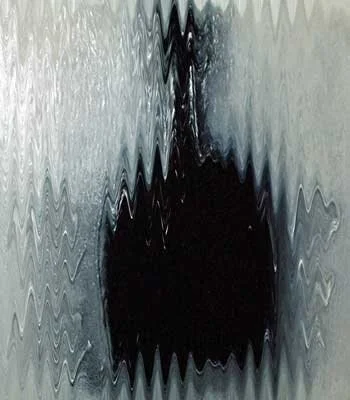Will COVID-19 Leave An Explosion of ME/CFS Cases in its Wake?
The first SARS epidemic in 2003 featuring SARS-CoV now seems like a poor dress rehearsal for today's SARS CoV-2 outbreak. With just 8,000 cases in total and 774 deaths, (compared to almost 1,000,000 cases and 4,000 plus deaths and rising rapidly) it seems hardly worth including in the same sentence.Yet it was a "pandemic" (infecting people in 29 countries) that landed many in the hospital and it had a chillingly high death rate - almost ten percent. The first SARS virus was far more lethal than the second one we're dealing with now.A few studies that tracked the survivors suggested that 2003, like 2020 surely will be, was probably a banner year for new cases of chronic fatigue syndrome (ME/CFS) and/or fibromyalgia. That's no surprise. We've known since the 2006 Dubbo study that a severe infection will leave a percentage of those infected with an ME/CFS-like condition.
The Toronto Outbreak
Like the present SARS-CoV-2 epidemic in the U.S. and other countries, the first SARS virus began its spread into Canada long before the authorities realized it was there or moved to stop it.One woman returning from Hong Kong, who came down with a fever two days later sparked the pandemic in Toronto. She was dead in two weeks. Only after her son died a week later and several other family members became ill was a link made to a new infection spreading in Hong Kong.A couple of weeks later, Toronto health authorities instituted emergency measures allowing them to track and detain anyone possibly infected. By the time the outbreak was over 345 people had been confirmed infected and 44 had died.
The Survivors
Several studies tracked the survivors. The first one - a year after the pandemic had passed - assessed lung functioning, provided a chest x-ray, had them do a 6-minute walk test, and assessed their quality of life. Most of the participants were health care workers.All but two had been admitted to a hospital, 16% had ended up in intensive care and 9% had been put on a respirator.While the lung functioning and chest x-rays were normal, fatigue (60%), difficulty sleeping (44%), and shortness of breath (45%) were common 12 months later. Only 13% said they'd fully recovered. Eighteen percent demonstrated a reduced walking distance during the 6-minute walk test.Thirty-seven percent reported significant reductions in their physical health, and 33% reported a significant reduction in their mental health.After one year, 17% of patients had still not returned to work, and 9% more had not returned to their pre-SARS work levels.The conclusion of the study was confounding, dismissing the physical deficits and focusing on mental health. After noting the high degree of fatigue, the problems with sleep, the reduced walking distance, the difficulty returning to work in a significant subset in the results, the authors concluded:
"Most SARS survivors had good physical recovery from their illness, but some patients and their caregivers reported a significant reduction in mental health 1 year later."
A 110-person 2005 UK study, on the other hand, found significantly reduced exercise capacity and health status six months after the infection. Still another post-SARS study seemed strangely eager to put a gloss on the aftermath of the epidemic as well.Despite reporting in the results that people aged over 40 experienced significantly reduced "health-related quality of life" over "multiple domains", and that reduced lung functioning was associated with reduced SF-36 (functional scores) and a lower score on the walk test, the authors concluded that:
"Patients had good recovery of pulmonary function and HRQoL."
Eight Years Later - Moldofsky's Fibromyalgia Post-SARS Study
University of Toronto professor Harvey Moldofsky was under no such illusions. A kind of an unsung hero in the ME/CFS and FM world, Moldofsky has been exploring the sleep, pain and fatigue connection in FM, in particular, over the past 30 plus years.In 2011 - 8 years after the SARS outbreak in Toronto - Moldofsky published a study "Chronic Widespread Musculoskeletal Pain, Fatigue, Depression and Disordered Sleep in Chronic post-SARS Syndrome; A Case-Controlled Study" comparing 22 post-SARS patients with fibromyalgia patients and healthy controls.
The Forgotten
The SARS threat long over, the medical world had moved on to focus whatever the next emergency was - cancer, heart disease, diabetes, Alzheimer's, etc. leaving behind the SARS survivors to manage as best they could.Eight years later, noting that a group of 50 health care workers were still unable to work and were experiencing "musculoskeletal pain, profound weakness, easy fatigability, (and) shortness of breath that accompanied psychological distress" Moldofsky, a sleep researcher, dug deeper.After assessing their physical and mood symptoms, Moldofsky put post-SARS survivors through a sleep study.
Results
Moldofsky found, as he suspected, that the post-SARS patients looked very much like ME/CFS and FM patients. Along with the disabling fatigue and pain came non-refreshing sleep, more arousals at night and the mysterious alpha-wave intrusions that often disrupted sleep in the two diseases. Moldofsky also found a delayed entry into REM sleep and increased stage 2 NREM sleep.One difference did stand out - the post-SARS patients experienced more fatigue and less pain than the FM patients did; i.e. they looked a bit more like chronic fatigue syndrome patients than FM patients.Moldofsky came up with two possible explanations for the long term disability he saw: psychological trauma from the illness and the direct effects of the virus itself.Noting that studies indicated the virus is able to spread throughout the brain including the hypothalamus, Moldofsky proposed the virus had produced a chronic neuroinflammatory state affecting sleep, pain sensitivity and energy levels. That hypothesis, of course, is identical to similar ones proposed for ME/CFS and fibromyalgia.Ending the paper Moldofsky asserted that:
"A longer term, large scale study is needed to establish the contribution of epidemic and pandemic viral disease to the disordered sleep, chronic fatigue and somatic symptoms of chronic fatigue/fibromyalgia syndrome."
While the 1918 flu pandemic involved the flu - not SARS-CoV-2 - recovery was so often contracted that it spawned a syndrome known at the time as "encephalitis lethargica".
The Present SARS Pandemic
That study has never been done, and now here we are with another potential nervous system infecting coronavirus.Avindra Nath at the NIH reported that the virus can cause multiple central nervous system problems (dizziness, headache, impaired consciousness, epilepsy, meningitis, encephalitis as well as delirium, hallucinations, mood disorders, hypomania, anxiety, depression). (It can also hit the peripheral nervous system causing loss of smell, taste problems, neuralgia and muscle injury.)According to one report, Nath stated that patients with multiple sclerosis, myasthenia gravis, dermatomyositis who are on immunotherapy are at higher risk of developing corona infection.
Severe Infections Found in Younger People
The virus’s lethality for older people is well-known but less well-known are the devastating effects it can have on the young and healthy. While they're not dying at the rate of the elderly, younger people appear to be being hospitalized at a torrid clip.Governor Cuomo recently reported that over 50% of coronavirus hospitalizations in New York City are between 18 and 49 years of age.With models predicting millions may fall ill in the U.S. alone, the emerging SARS-CoV-2 cohort presents an immense opportunity to understand chronic post-infectious illnesses that will (hopefully) not come again.Since studies indicate that the severity of illness greatly increases the risk of coming down with a post-infectious illness, the high numbers of younger people being hospitalized for COVID-19 suggests considerable numbers of people in the prime of their lives may have an ME/CFS-like illness in their future.
Opportunity Knocks
It's possible that post-SARS illness cohort will be so large, affect so many younger people, and cause such losses in economic productivity that the NIH and other research institutions will, this time, focus considerable resources on the post-infectious consequences of having a severe infection.The Dubbo studies and others have invariably found that the type of infection (bacterial or viral), the type of tissue it primarily infects (respiratory system, gut, brain) doesn't matter. For the most part, after a period of time, the post-infectious illness patients look like each other: they look like ME/CFS/FM patients.Using post-infectious ME/CFS patients to help understand what post-SARS patients will be going through seems to make perfect sense as well. Avindra Nath's small, but comprehensively studied, ME/CFS group in the NIH's intramural study, could provide clues for post-SARS studies. Expanding Nath's ME/CFS cohort and using the study to help understand the massive hit SARS-CoV-2 is likely to produce, not today, not tomorrow, not in three months, but in the years to follow would make perfect sense.Even more impactful would be rigorously following and studying the mass post-COVID-19 cohort that will emerge in order to understand how post-infectious diseases emerge and how to treat them. Avindra Nath reported that "a lot of people have been asking about post-viral syndromes," that it would be good to follow the many "postviral immune mediated diseases" (including ME/CFS), and that attempts are being made "to develop nationwide databases." Vicky Whittemore reported that the NIH has recognized a huge problem may be brewing, and that an opportunity exists to learn about post-infectious illnesses. She started talking about post-COVID-19 infection illnesses (e.g. sequelae) with Joe Breen and others at NIAID a couple of weeks ago, and have heard from several researchers who are interested. Whittemore suggested that everyone who tests positive for COVID-19 get on a COVID-19 registry and she mentioned this one. (There may be others.) It's possible that ME/CFS holds clues to what hundreds of thousands of people may be experiencing over the next year and onwards. It's clear that those having difficulty recovering from COVID-19 will hold clues to what has been happening with us as well. A vigorous research effort to understand their plight should provide a boon for us all. The dark cloud that is the coronavirus could produce a silver lining after all.




